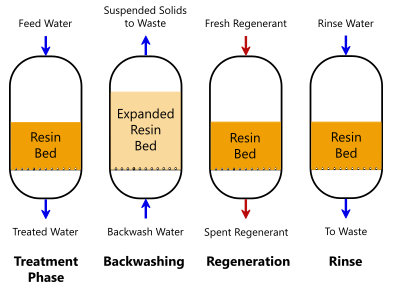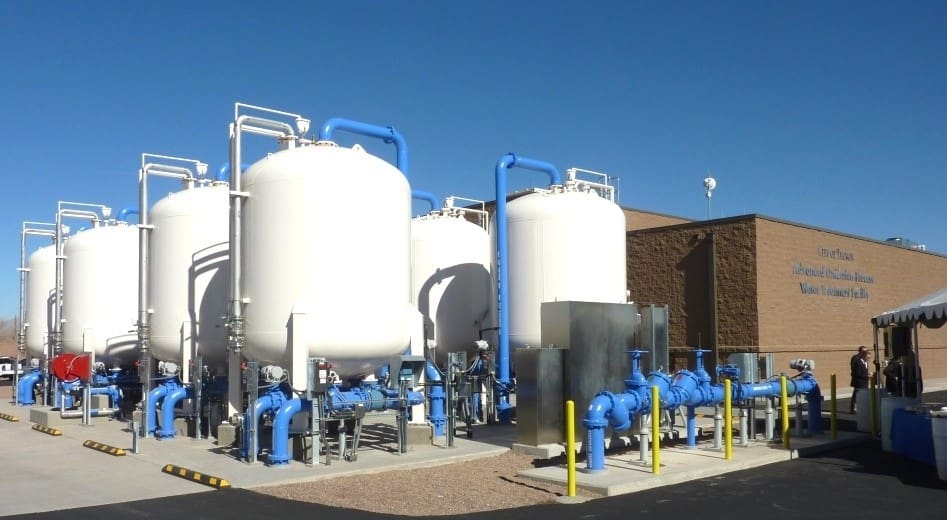How PFAS Treatment Reduces Environmental Impact and Improves Public Safety
How PFAS Treatment Reduces Environmental Impact and Improves Public Safety
Blog Article
How PFAS Treatment Makes Certain Clean and Lasting Water
The visibility of PFAS, commonly called "permanently chemicals," presents substantial difficulties to water top quality and public health. Advanced therapy innovations, including activated carbon adsorption and membrane filtration, have arised as reliable options to mitigate these pollutants. By using these techniques, communities can not only achieve cleaner water however also foster sustainable practices that protect ecosystems. Nonetheless, the ramifications of these therapies expand beyond immediate wellness advantages; they raise crucial questions regarding lasting water monitoring strategies that have to be dealt with to ensure a resistant future. What does this mean for our strategy to water sustainability?

Comprehending PFAS Contamination
PFAS, or per- and polyfluoroalkyl compounds, have become a substantial environmental problem due to their extensive frequency and persistence in the environment. These artificial chemicals have actually been made use of in different industrial applications and customer products, consisting of non-stick kitchenware, water-proof apparel, and food packaging, because of their special homes such as water and oil resistance.
The contamination of soil and water resources by PFAS happens primarily via commercial discharges, firefighting foam use, and leaching from landfills. pfas management. As soon as released, these materials are resistant to deterioration, causing their accumulation in the atmosphere. This determination increases important problems, as PFAS can take a trip cross countries with groundwater and surface water supply, influencing alcohol consumption water materials and communities

Wellness Risks of PFAS
The perseverance of PFAS in the environment increases substantial health and wellness issues for individuals subjected to these compounds. Research has connected PFAS exposure to various adverse health effects, consisting of immune system disorder, liver damage, and boosted threat of certain cancers cells.
The universality of PFAS in consumer items, such as non-stick cooking equipment, water-repellent textiles, and food packaging, more amplifies the danger of exposure. Consuming water infected with PFAS is a significant concern, as these chemicals can seep right into groundwater resources. Prone populations, consisting of children and those living near commercial websites, may deal with elevated risks due to their creating systems and potential for greater exposure levels.
As recognition of these health risks remains to expand, governing agencies are starting to develop guidelines for PFAS levels in drinking water. Public wellness campaigns are necessary to reduce exposure and protect neighborhoods from the lasting results of these hazardous substances.

Ingenious Treatment Technologies
How can we effectively tackle the obstacles posed by PFAS contamination in water resources? Innovative therapy technologies are becoming crucial options in the quest for clean water. These techniques concentrate on the removal or damage of per- and polyfluoroalkyl materials (PFAS), which are notorious for their persistence in the setting.
One promising method is adsorption using his response innovative materials, such as activated carbon and ion exchange materials. These materials have revealed efficiency in capturing PFAS molecules from water. One more notable innovation is membrane purification, which uses nanofiltration and turn around osmosis to different contaminants at the molecular level, therefore supplying a barrier versus PFAS.
In addition, progressed oxidation procedures (AOPs) utilize strong oxidants to break down PFAS compounds right into harmless byproducts. This approach is particularly effective for dealing with highly infected water sources. Bioremediation strategies, utilizing details microorganisms, are likewise being checked out to degrade PFAS.
As research study continues, crossbreed systems that integrate numerous innovations may provide improved efficiency, resolving the complexities of PFAS contamination. The development and application of these innovative therapy modern technologies are crucial actions towards making sure the safety and security and sustainability of our water sources.
Advantages of Reliable PFAS Therapy
Efficiently treating PFAS contamination in water sources considerably enhances public health and wellness and ecological safety. PFAS, often referred to as "forever chemicals," are immune to deterioration and can build up in the human body, resulting in serious wellness dangers such as cancer, liver damage, and body immune system dysfunction. By carrying out reliable treatment approaches, communities can lower direct exposure to these hazardous substances, ultimately boosting the wellness outcomes of their populations.
Furthermore, effective PFAS therapy adds to the preservation of local communities. Infected water can adversely impact aquatic life and interfere with the fragile balance of regional habitats. By making certain tidy water, treatment procedures protect biodiversity and maintain environmental integrity.
Furthermore, reliable PFAS remediation can promote public self-confidence in water quality. When communities are assured that their alcohol consumption water is devoid of hazardous contaminants, it advertises a feeling of safety and wellness. This trust fund is crucial for neighborhood engagement and support for ongoing water monitoring efforts.
Future of Water Sustainability
In the middle of growing problems about water high quality and deficiency, the future of water sustainability rests on ingenious approaches and collective efforts. As communities face the impending hazards continue reading this of impurities like PFAS, the growth of innovative therapy modern technologies is necessary. These modern technologies not just focus on the removal of dangerous compounds but additionally advertise the reuse and recycling of water, therefore decreasing general need.
Additionally, effective water governance plays a vital role in making sure sustainable techniques. Policymakers must incorporate scientific research study with regulatory structures to develop clear guidelines for water use and therapy. Stakeholder interaction, consisting of regional neighborhoods and industries, cultivates a sense of common obligation and encourages sustainable techniques throughout numerous industries.
Financial investment click to find out more in facilities is likewise vital; upgrading aging systems to integrate modern-day filtering and purification techniques can dramatically enhance water high quality. Embracing green technologies, such as all-natural purification systems, can provide environment-friendly remedies.
Ultimately, the future of water sustainability depends on a holistic method that incorporates technology, policy, and neighborhood involvement. By focusing on these components, we can protect our water resources for generations to come, guaranteeing tidy and lasting water for all.
Verdict
In verdict, the efficient treatment of PFAS is vital for making certain clean and sustainable water. Inevitably, durable PFAS therapy strategies add to long-term resilience in water administration, promoting public depend on in water high quality and promoting sustainable techniques.
Report this page